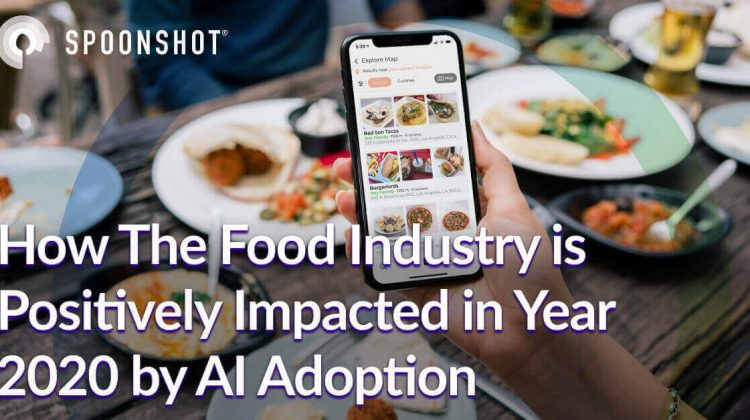
AI in the food and beverage market is expected to reach US$29.94 billion by 2026 at a CAGR of over 45.77%. Consumer demands are constantly evolving, and the food industry needs to keep up. An emerging 2020 food trend was deploying AI in food industry to understand consumer preferences, streamlining produce sorting, or cleaning complex equipment.
2020 has required innovation in the face of new challenges. The pandemic has led to automation driving focus and investment with a boom in cloud kitchens.
US food waste is about one-third of everything produced, equaling about 60 tons and $160 billion each year. Streamlining the supply chain by deploying AI leads to actionable insights based on real-time data.
A major 2020 food trend was consumers and industries growing more aware of eco-conscious decision-making, whether it was being aware of what was in the pantry or reducing the volume of produce wasted. TOMRA, for instance, develops sensor-based optical food sorting solutions with machine learning capabilities that optimize sorting, reducing wastage.
Impact of Artificial Intelligence in the food industry
Streamlining Operations
The addition of robotics and AI to the manufacturing section of the food industry has been a major food trend of 2020. A major fear has been whether human personnel will be replaced by this trend.
However, the general opinion is that AI/ML will only ever work alongside humans and will not replace them. The labor and designations will simply shift to newer areas or lead to the development of newer roles.
This means rote tasks that can be automated will be taken on by AI leading to enhanced productivity. The pandemic has had far-reaching implications on what automation and robotics will yield from the restaurant owners’ perspective. Future lockdowns will no longer be a threat as robotics and automation could allow work to progress with minimal human personnel.
Must Read: Applications of AI in Food Service Industry
Quality and Hygiene
Maintaining food hygiene and safety is of utmost importance, particularly in the midst of a pandemic. A 2020 food trend has been the compulsory donning of safety gear at all times by all personnel in manufacturing floors and restaurant kitchens.
Most systems today require manual monitoring of the above. This means supervisors need to go down to the kitchens and physically check for violations. This becomes problematic as it is essential to check especially when supervisors are not around.
The biggest problem has been the enforcement of this rule. KanKan AI helps with this by ensuring food quality and safety. With an estimated accuracy of 95% the system monitors workers by identifying their faces. It further detects whether or not they are wearing their safety gear such as masks, gloves, hairnets etc. Upon detecting any violations, images are generated and sent to the supervisor.
Also Read: 9 Food Trend Predictions For 2022 & Beyond
Value Addition
It is essential to look at all areas of the food industry to understand where automation can add the maximum value. A 2020 food trend was the paranoia around stepping out. This was the right time for the AI and food industry to work together.
This led to restaurants setting up omni channel touchpoints to enable access across multiple platforms. This makes ordering a meal simple and straightforward. AI-based self-ordering machines can process orders and payments leading to a seamless customer experience by eliminating human interference and reducing the waiting time. With social distancing necessary an online queue while sitting at home or at the table, puts everyone’s mind at ease.
Today, online delivery is nothing to write home about. However, recreating the restaurant experience amidst a global pandemic is the challenge. Customers today expect an authentic, delightful, and sustainable experience. This includes the comfort of being able to order at leisure without judgement or pressure around dietary preferences or portion sizes.
This allows employees to focus on creating an exceptional customer experience by freeing up time they would have spent on rote tasks.



Leave a Reply